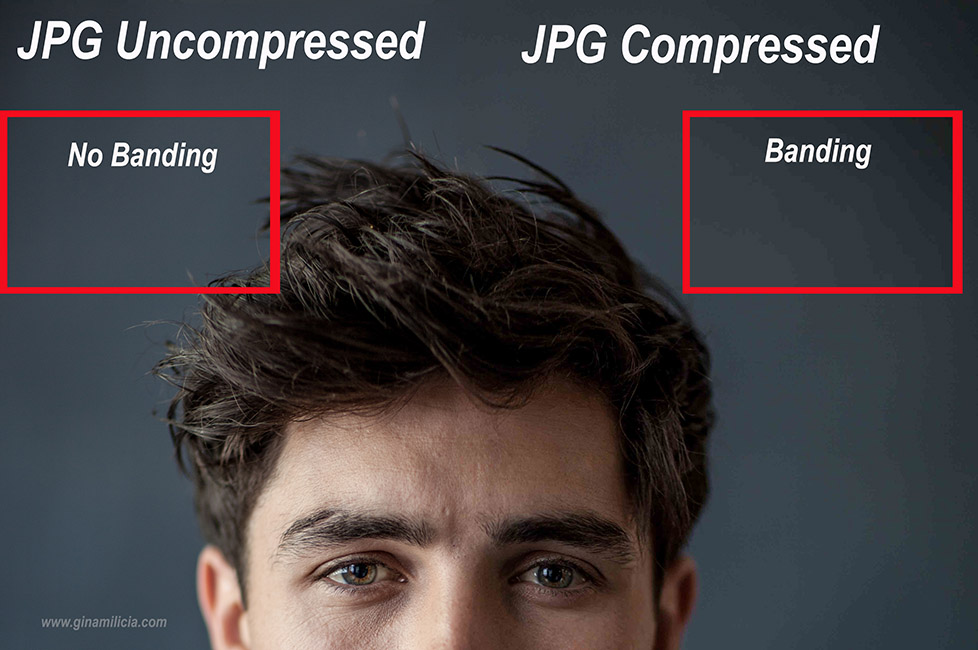
The TIFF file is like a slow cooked bolognese, the JPEG is a stir fry.
JPEG is a compressed file. It’s best used when you want to keep file size to a minimum such as web use.
TIFF is the file format that is the highest quality and industry standard for professional and commercial printers.
JPEG is recognised by browsers and most software, TIFF isn’t. This is why JPEG is known as a “web format” and TIFF is known as a “print format” for commercial printing.
The difference between ordinary and extraordinary is that little extra.
– Jimmy Johnson
I love cooking homemade bolognese sauce for my family every Sunday. It’s a recipe I learned from my Sicilian mother and it’s been in our family for generations. The secret to this sauce is time and love. The time is not so much in the preparation, but in the slow cooking. I generally let the sauce simmer for 6-12 hours. The longer the better. The love is a bit woo-woo, but I think the way I feel when I’m doing something has a huge effect on the result. Cooking is my happy place. It’s how I relax and unwind.
There have been numerous Sundays of late when my workload has been so intense that I haven’t had much time to cook. I started cutting corners in my bolognese cooking. Instead of the slow cook, I tried the stir fry version of bolognese. (FYI when I cook, I like to pretend I’m a contestant on MasterChef cooking for the grand prize. Does anyone else do that?)
The stir fry bolognese sauce looks exactly like the slow cooked bolognese, but that’s where the similarities end. The reason this recipe tastes so good is because I took the extra time and effort and love to make it. Skipping steps and rushing it through makes a sauce that is just ok. It does the job, feeds the family – but it lacks quality and isn’t memorable.
What has bolognese got to do with photography?
My thought process behind file choice I work with when I’m retouching images is much like my bolognese sauce: I can always cut corners and create stuff that looks fine to the untrained eye or I can go the extra mile and create something memorable.
There are a bazillion great arguments out there about what type of file you should use to retouch your photos in and why. I’m not going to get into the techy nitty-gritty here because if you’re reading this, there is a very good chance the science behind it all will bore the caca out of you.
Go for quality
My argument for what I use (and why) comes down to one thing: quality. When I shot film, I always used the best film because I wanted to achieve the best results. There is no difference with my digital file choice.
If I’m working in Lightroom, which is a RAW digital file processor, I use RAW files.
When I’m retouching images in Photoshop, I work in 16 bit TIFF files.
Why? Because they contain the most information: 65,536 bits of it compared with 256 bits in a JPEG. The TIFF file is like a slow cooked bolognese, the JPEG is a stir fry.
TIFF is the file format that is the highest quality and industry standard for professional and commercial printers. TIFF supplies maximum detail without loss of quality because it is an uncompressed file format. Basically it has loads more information in the file which means you get far greater colour range and a much smoother transition between tones. The lower the quality of your file, the rougher it will look. This is most obvious in plain areas like sky or dark backgrounds.
A TIFF can be output as 8 bit file or 16 bit file. An 8 bit file can use 256 distinct tones. A 16 bit TIFF can represent 65,536 tones.
More info = better quality.
It’s an extra step, files are huge and take up more space on your hard drive, but like my slow cooked sauce, I believe the extra effort is well worth it.

You may not notice the difference between TIFF and JPEG on the screen or on the web, but it will be noticeable at the printers or if your image ever gets published.
To compress or not to compress, that is the question

Ever notice banding in blue skies of your prints or dark backgrounds of your portraits? This banding is caused by the amount of image compression of your JPEGs.
Compressing your JPEGs just means you are making all the information fit into a smaller file. The upside of this is smaller files are easier to upload and email etc. The downside is the quality of the file is reduced.
I will generally output my JPEGs at full size without compression because I want maximum quality. When a client downloads their images from my Photoshelter archive, I give them the option to download full size, medium, or small JPEGs.
Are you a fan of the slow cook or do you prefer the stir fry or do you just like to eat out? I’d love to hear your opinions on the TIFF vs JPEG debate, compressing files, and loss of quality.


